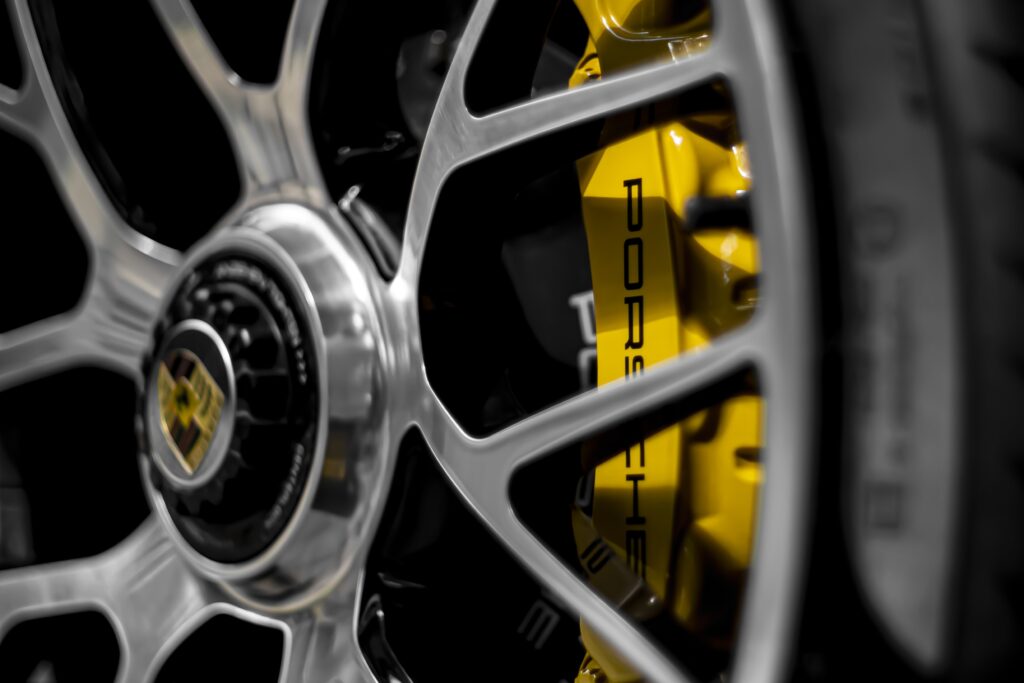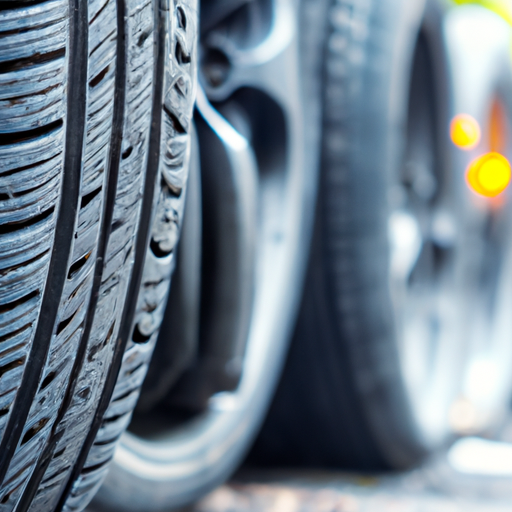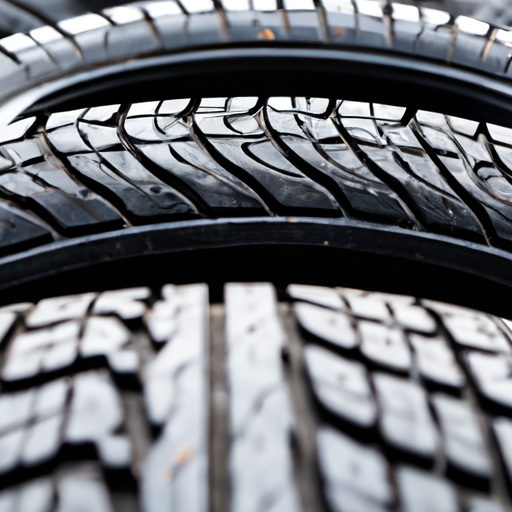Are you ready to hit the open road this summer and push your car to its limits? Before you embark on any high-speed adventures, it’s essential to ensure that your vehicle is equipped with the right tires for the job. Summer tires are a popular choice for many drivers during the warmer months, but can they truly handle the demands of high-speed driving? In this article, we will explore the capabilities of summer tires and provide you with valuable insights to make an informed decision for your next adrenaline-fueled journey.
Overview of Summer Tires
Definition of summer tires
Summer tires, also known as performance tires, are specially designed tires that provide excellent grip, handling, and responsiveness on dry and warm road conditions. These tires are optimized for high-speed driving and are popular among sports car enthusiasts and drivers who seek enhanced performance.
Features of summer tires
Summer tires possess specific features that make them suitable for high-speed driving. They have a unique tread design with shallow grooves, sipes, and channels to maximize surface contact and enhance grip. The rubber compound used in summer tires is generally softer, ensuring better traction and responsiveness. Additionally, summer tires have a stiffer sidewall to improve stability and cornering ability.
Advantages of summer tires
Summer tires offer numerous advantages for high-speed driving. Their exceptional grip ensures superior traction and stability, enabling drivers to maintain control even at high speeds. These tires provide shorter braking distances, allowing for safer and more efficient stopping. They also offer excellent cornering ability, enhancing maneuverability and overall driving performance. Additionally, summer tires are resistant to heat buildup, preventing tire failure during extended high-speed driving.
Limitations of summer tires
While summer tires excel in warm, dry conditions, they also have limitations. These tires are not suitable for cold temperatures and lose their effectiveness when the temperature drops below around 45 degrees Fahrenheit (7 degrees Celsius). They also offer reduced traction on wet or icy surfaces, increasing the risk of skidding or sliding. Furthermore, summer tires are more prone to punctures and damage due to their softer rubber compound.
High-Speed Driving and Its Impact on Tires
Understanding high-speed driving
High-speed driving refers to operating a vehicle at speeds above the legal limits or driving at a pace significantly faster than usual. This type of driving is commonly associated with highways, race tracks, or open roads with fewer restrictions on speed. High-speed driving requires good traction, stability, and control, making it crucial to have tires specifically designed for such conditions.
Effects of high-speed driving on tires
Driving at high speeds exerts significant stress and heat on the tires. The added forces and friction increase the temperature within the tire, potentially causing it to wear out more quickly. Rapid acceleration, braking, and cornering during high-speed driving also put more strain on the tires, leading to faster tread wear and reduced performance.
Importance of tire performance at high speeds
Having tires that can withstand the demands of high-speed driving is vital for safety and optimal vehicle performance. High-performance tires, such as summer tires, are engineered to handle these conditions and provide the necessary grip, stability, and responsiveness for safe and enjoyable high-speed driving experiences.

Characteristics of Summer Tires
Tread design
The tread design of summer tires is specifically tailored to maximize grip and control on dry roads. The shallow grooves, wider contact patches, and solid center rib of the tread allow for better stability during high-speed maneuvering and cornering.
Rubber compound
Summer tires utilize a softer rubber compound compared to all-season or winter tires, which enhances traction and grip on dry surfaces. The softer compound increases the tire’s contact with the road, allowing drivers to experience enhanced performance and responsiveness.
Sipes
Sipes are thin slits in the tire tread that help improve traction on wet surfaces by channeling water away from the tire’s contact patch. While summer tires have fewer sipes compared to all-season or winter tires, they still contain sipes to provide some level of wet-weather performance.
Grooves and channels
Summer tires feature wider and shallower grooves and channels in their tread pattern to enhance performance and grip on dry roads. The reduced grooving helps increase stability during high-speed driving and improves responsiveness when maneuvering.
Sidewall stiffness
Summer tires have stiffer sidewalls compared to regular tires. This increased sidewall stiffness improves handling and stability during high-speed driving and cornering, reducing the risk of tire distortion and loss of control.
Performance of Summer Tires at High Speeds
Grip and traction
Summer tires excel in providing exceptional grip and traction at high speeds. The softer rubber compound and optimized tread design allow for increased contact with the road, resulting in improved traction and better control.
Braking performance
Due to their advanced tread design and high-performance rubber compound, summer tires offer shorter braking distances. These tires provide excellent stopping power and responsiveness, promoting safer high-speed driving habits.
Cornering ability
The enhanced cornering ability of summer tires is a direct result of their tread design, rubber compound, and sidewall stiffness. The solid center rib and wider contact patches ensure precise and stable cornering, allowing drivers to navigate curves and turns with confidence.
Handling and responsiveness
Summer tires provide exceptional handling and responsiveness, allowing drivers to enjoy a more connected driving experience. The combination of a soft rubber compound, specialized tread design, and stiffer sidewalls enables quick and precise steering response, making high-speed driving more enjoyable.
Heat resistance
Summer tires are designed to handle the heat generated during prolonged high-speed driving. The unique rubber compounds used in these tires are formulated to resist excessive heat buildup, reducing the risk of tire failure and maintaining performance and safety.

Considerations for High-Speed Driving with Summer Tires
Speed ratings of summer tires
When using summer tires for high-speed driving, it is essential to choose tires with the appropriate speed rating. Speed ratings indicate the maximum safe speed at which a tire can operate effectively. It is crucial to match the speed rating of the tire to the speed capabilities of your vehicle to ensure optimal performance and safety.
Proper tire maintenance
Regular tire maintenance is crucial for prolonging the life of your summer tires and ensuring consistent performance at high speeds. This includes checking and maintaining proper tire pressure, regular tire rotations, and alignment checks.
Inflation pressure
Maintaining optimal tire pressure is essential for safe and efficient high-speed driving. Underinflated tires can cause increased tread wear, reduced handling, and decreased fuel efficiency. Conversely, overinflated tires can compromise traction and ride comfort. Regularly check and adjust the tire pressure according to the manufacturer’s recommendations.
Alignment and balancing
Proper alignment and balancing of the tires are critical for stable and reliable high-speed driving. Misaligned tires can cause uneven wear and reduced handling, while imbalanced wheels can lead to vibrations and decreased stability. Regularly check and have your tires properly aligned and balanced by a professional.
Regular inspections
Regular inspections of your summer tires are necessary to identify any visible damage, tread wear, or signs of aging. Look for bulges, cuts, punctures, or any other potential issues that may compromise the performance and safety of your tires. If you notice any abnormalities, consult a tire professional and consider replacing the tires if necessary.
Benefits of Using Summer Tires for High-Speed Driving
Enhanced performance and control
Summer tires provide superior grip, traction, and handling, offering drivers enhanced performance and control during high-speed driving. With these tires, you can experience smoother acceleration, precise steering response, and increased maneuverability, enhancing your overall driving experience.
Improved safety
The exceptional grip and shorter braking distances of summer tires contribute to improved safety during high-speed driving. The ability to stop quickly and maintain control in emergency situations can significantly reduce the risk of accidents and enhance safety on the roads.
Better fuel efficiency
Summer tires are designed to reduce rolling resistance, resulting in improved fuel efficiency. The reduced friction and optimized tread pattern decrease the energy required to rotate the tires, helping to maximize fuel economy during high-speed driving.
Reduced road noise
Summer tires generally produce less road noise compared to other tire types. The specialized tread design and rubber compounds used in these tires help minimize vibrations and noise, providing a quieter and more comfortable driving experience at high speeds.
Extended tread life
Although summer tires may wear out faster than their all-season counterparts, they often offer extended tread life when properly maintained. Regular tire rotations and proper inflation can help even out the wear and maximize the lifespan of your summer tires, allowing you to enjoy their performance benefits for longer periods.

Challenges of Using Summer Tires for High-Speed Driving
Limited performance in cold temperatures
One significant limitation of summer tires is their reduced performance in cold temperatures. When the temperature drops below around 45 degrees Fahrenheit (7 degrees Celsius), the rubber compound in summer tires hardens, resulting in reduced grip and traction. It is vital to switch to winter or all-season tires in colder climates or during colder months to ensure optimal safety and performance.
Reduced traction on wet or icy surfaces
Summer tires are primarily designed for dry road conditions and offer reduced traction on wet or icy surfaces. The specialized tread patterns of summer tires prioritize performance on dry roads, and their shallow grooves and limited siping can hinder their effectiveness on wet or icy surfaces. It is crucial to exercise caution and adjust your driving style when encountering these conditions.
Increased risk of hydroplaning
Due to their limited tread design for channeling and dispersing water, summer tires are more susceptible to hydroplaning on wet roads. Hydroplaning occurs when the tires lose contact with the road surface and glide on a thin layer of water. This can significantly reduce your control and increase the risk of accidents. It is important to drive at safe speeds and avoid standing water or areas prone to flooding when using summer tires in wet conditions.
Greater susceptibility to punctures and damage
The softer rubber compound used in summer tires, while beneficial for performance, also makes them more vulnerable to punctures, cuts, and damage from debris on the road. Additionally, the reduced tread depth of summer tires means that they have less resistance to damage. It is crucial to be mindful of road hazards and practice defensive driving techniques while using summer tires to minimize the risk of tire damage.
Alternatives to Summer Tires for High-Speed Driving
All-season tires
All-season tires are designed to provide balanced performance in various weather conditions, including dry and wet surfaces. While they may not offer the same level of performance as summer tires in optimal conditions, they provide better all-around performance and greater safety in colder temperatures or wet road conditions.
Performance tires
Performance tires are specifically engineered for high-speed driving and offer enhanced grip and traction on dry surfaces. They often feature aggressive tread patterns and specialized rubber compounds to optimize performance on the road. Performance tires provide excellent handling and control, making them a suitable alternative to summer tires for high-speed driving.
Track-oriented tires
For those with a more intense need for speed, track-oriented tires are designed specifically for racing or track use. These tires prioritize performance and offer the highest levels of grip, traction, and cornering ability. However, they may have limited road legality and may not be suitable for everyday driving on public roads.

Recommendations for High-Speed Driving with Summer Tires
Choose the right summer tires
When selecting summer tires for high-speed driving, consider factors such as tread design, rubber compound, and speed rating. Choose tires that are specifically designed for high-performance and ensure they are appropriate for your vehicle and driving preferences.
Adhere to speed ratings
Match the speed rating of your summer tires with the speed capabilities of your vehicle to ensure safe and optimal performance. Operating at speeds beyond the tire’s designated speed rating can compromise safety and increase the risk of tire failure.
Follow proper tire maintenance practices
Regularly check the tire pressure, align and balance the tires, and perform routine inspections to ensure the longevity and safety of your summer tires. Proper tire maintenance practices help optimize performance, extend tire life, and enhance safety during high-speed driving.
Consider weather conditions
While summer tires excel in warm, dry conditions, they have limitations in colder or wet conditions. Consider switching to all-season or winter tires if you anticipate encountering cold temperatures or wet road conditions during your high-speed driving.
Exercise caution and responsible driving
Regardless of the tire type, it is essential to drive responsibly and within your abilities. Adjust your driving behavior according to road and weather conditions, and always prioritize safety while enjoying the benefits of summer tires and high-speed driving.
Conclusion
In conclusion, summer tires are capable of handling high-speed driving and offer numerous benefits for those seeking enhanced performance and control. Their specialized features, such as tread design, rubber compound, and sidewall stiffness, optimize grip, traction, and responsiveness on dry and warm road conditions. However, it is important to be aware of their limitations, including reduced performance in cold temperatures, reduced traction on wet surfaces, and increased risk of hydroplaning. By following proper tire maintenance practices, choosing the right tires for your vehicle and driving needs, and driving responsibly, you can safely and optimally enjoy high-speed driving with summer tires.


